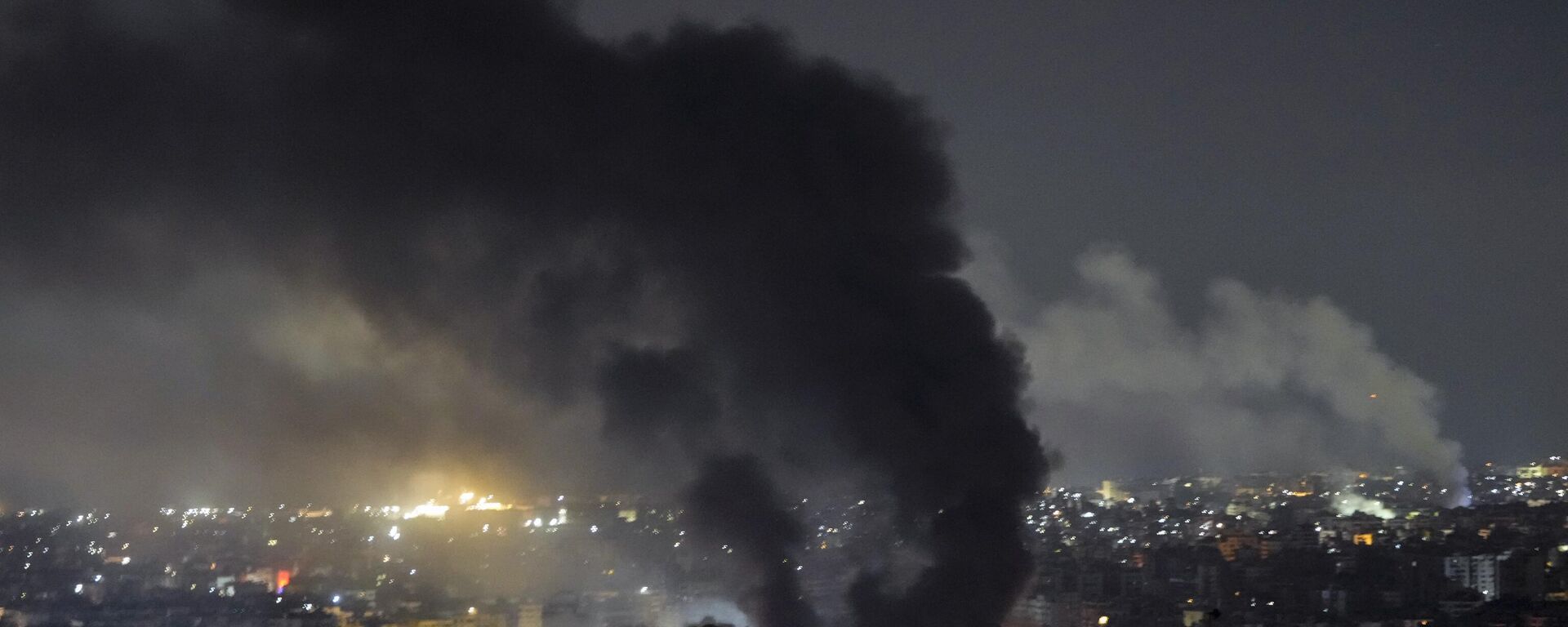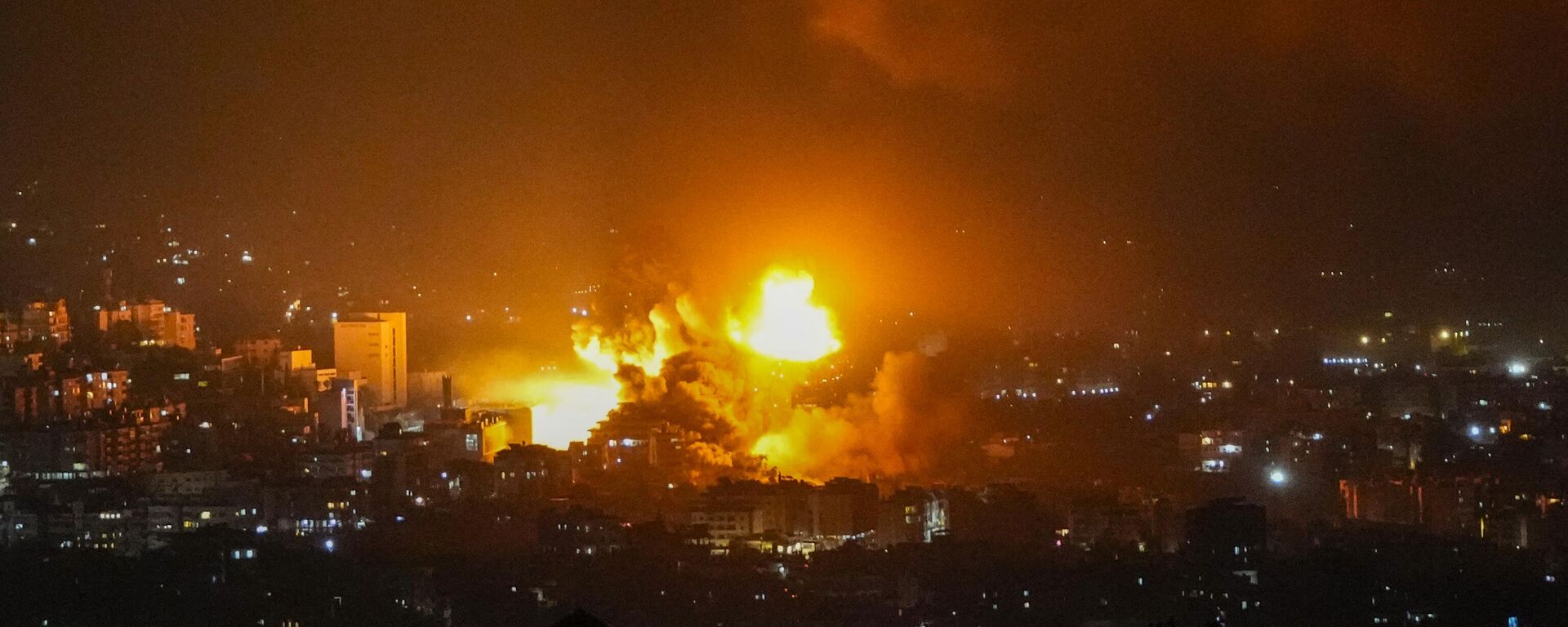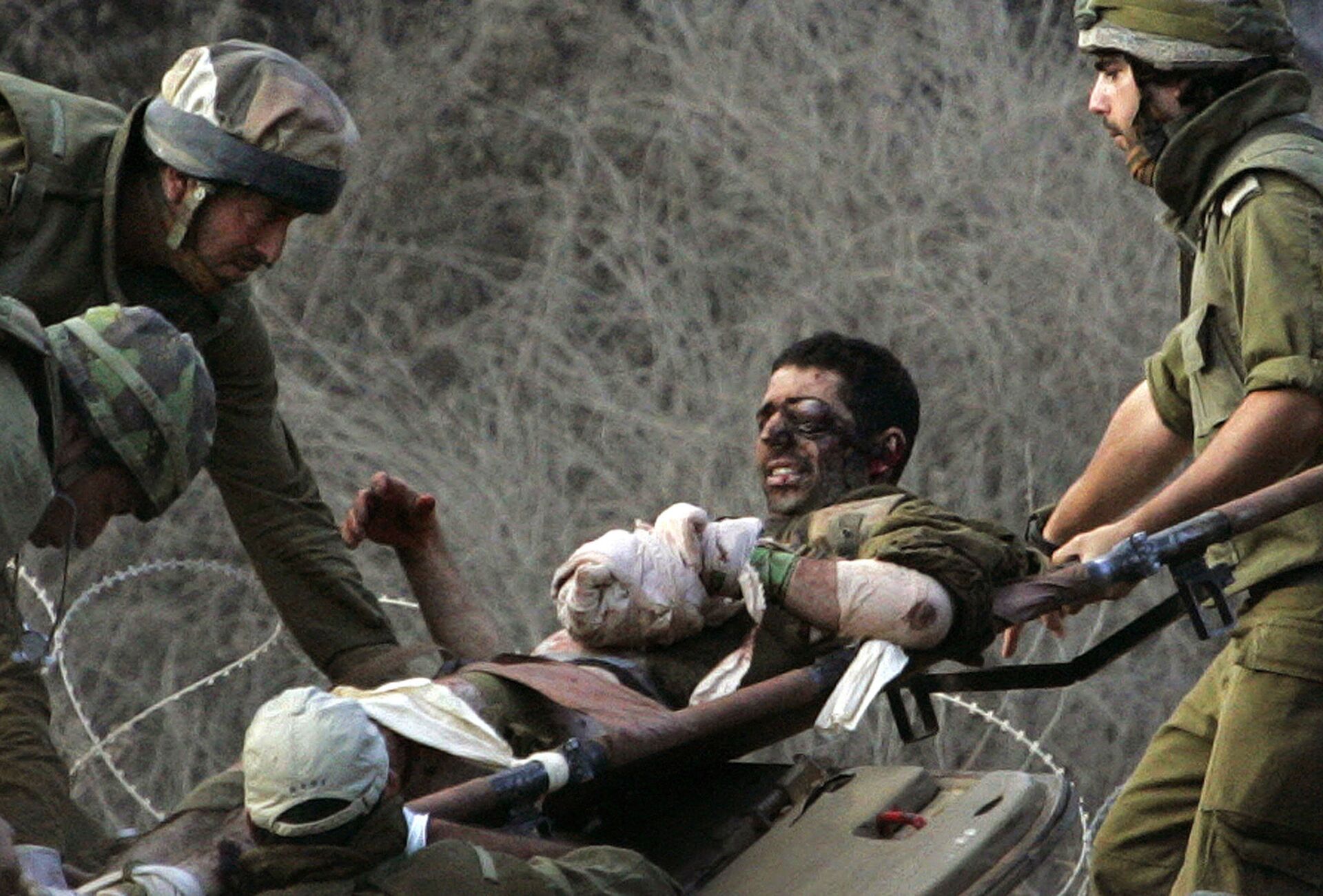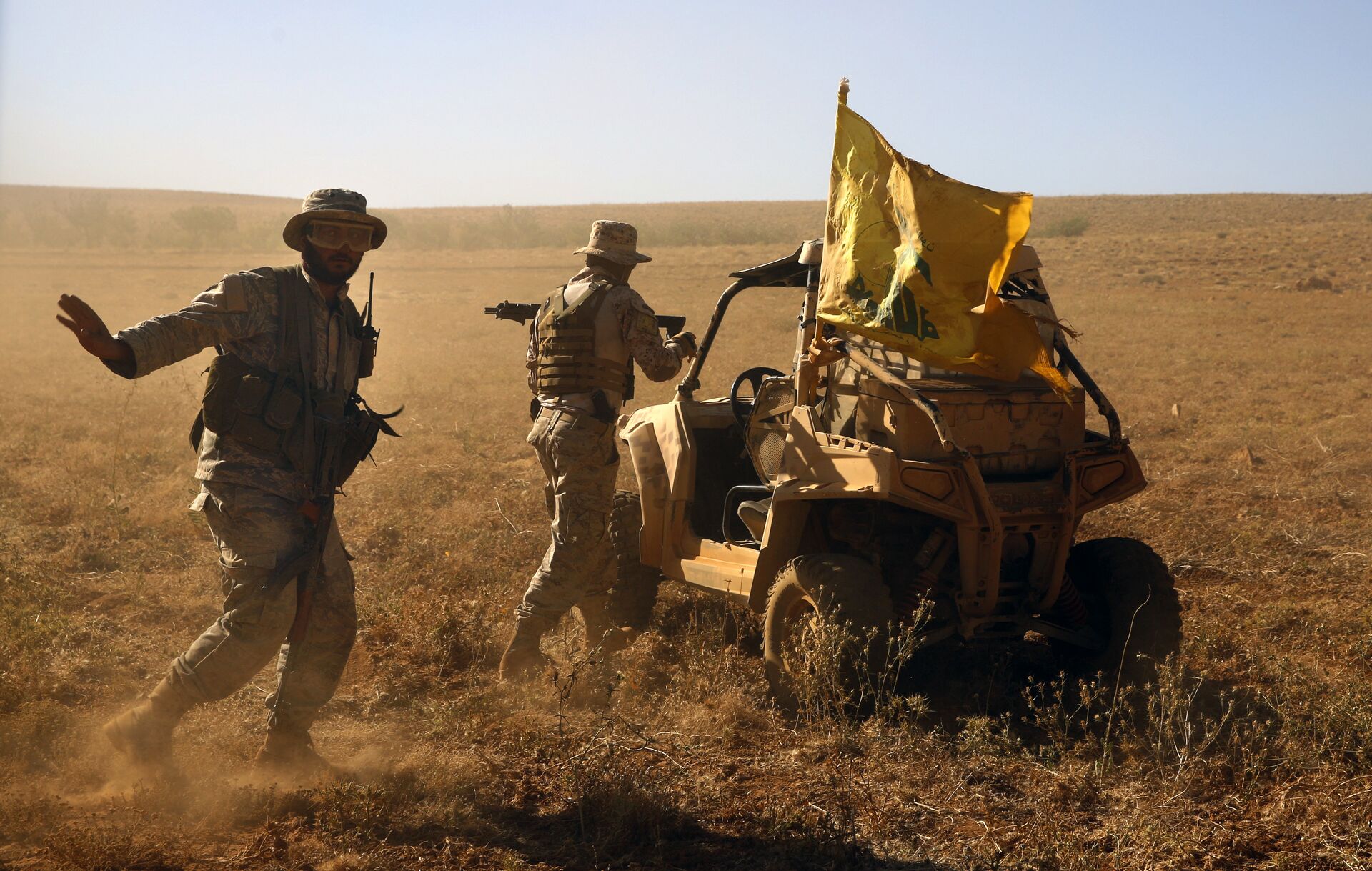https://sputnikglobe.com/20240928/how-hassan-nasrallah-transformed-hezbollah-into-a-political-and-military-powerhouse-1120331734.html
How Hassan Nasrallah Transformed Hezbollah Into a Political and Military Powerhouse
How Hassan Nasrallah Transformed Hezbollah Into a Political and Military Powerhouse
Sputnik International
Hezbollah Secretary-General Hassan Nasrallah was killed in an Israeli airstrike in Beirut on Friday alongside several commanders of the Lebanese Shia Islamist political party and paramilitary force he led for 32 years. In that time, Hezbollah transformed into one of the Middle East's most powerful centers of resistance to the US and Israel.
2024-09-28T13:33+0000
2024-09-28T13:33+0000
2024-09-29T09:06+0000
world
middle east
hassan nasrallah
bashar assad
israel
lebanon
iran
hezbollah
israel defense forces (idf)
beirut
https://cdn1.img.sputnikglobe.com/img/07e8/09/1c/1120331577_0:144:3000:1832_1920x0_80_0_0_007bcbead1feb1bba7d7522f1450a31e.jpg
Early Life and Rise to PowerThe eldest of nine children, Hassan Nasrallah (whose surname translates as "Victory Through God") was born to a poor, not particularly religious family of greengrocers in Beirut in 1960. The family fled the city in 1975 at the start of the Lebanese Civil War. Taking an interest in religion as a teenager, Nasrallah joined Amal (lit. "Movement of the Deprived"), a Shia religious political, social and militia movement founded by Iranian-Lebanese Shia cleric Musa al-Sadr, in 1978.In 1982, Nasrallah transitioned to Hezbollah (lit. "Party of God") after the fledgling, Iranian Revolution-inspired organization’s creation to resist the Israeli invasion of southern Lebanon, where it proved to be one of the most effective forces engaged in guerrilla warfare against the Israeli Army.Mentorship and LeadershipRising through the ranks to become the chief of Hezbollah’s executive council in 1985, and taking advantage of connections he had forged with Shia thinkers and revolutionary leaders through his travels and religious studies in Iraq and post-revolution Iran in the 1970s and 1980s, Nasrallah became Hezbollah’s leader in 1992, after its previous head and Nasrallah’s mentor Abbas al-Musawi, his wife and child were killed in an Israeli Hellfire missile strike.Nasrallah would go on to lead Hezbollah for fully half his life. “We will continue this path…even if we are martyred, all of us and our houses demolished over our heads, we will not abandon the choice of the Islamic resistance,” Nasrallah said following al-Musawi’s death.Military and Resistance StrategyMilitarily, Hezbollah under Nasrallah complemented the traditional guerrilla tactics of Kalashnikov, Molotov cocktail, Katyusha rocket attacks, bombings and hijackings to include special operations training – including the creation of the elite Radwan Force in 2006, for infiltrations, ambushes and reconnaissance. In 2021, Nasrallah said the group’s fighting and reservist strength had reached 100,000 men, complemented by tens of thousands of increasingly sophisticated long-range rockets, missiles and drones.With assistance from Iran and Syria, Hezbollah under Nasrallah assembled arguably the most powerful militia in the Middle East, and possibly the world, forcing Israel to withdraw from southern Lebanon in 2000 and collapsing its puppet South Lebanon Army after a long, grinding guerrilla campaign, and earning the reputation of the only Arab armed formation ever to force the IDF to withdraw from captured territory without a treaty.During the 2006 Lebanon War, Hezbollah gave Israel a bloody nose a second time, with outnumbered militants fighting the IDF into a standstill, culminating in an Israeli withdrawal in a UN-brokered ceasefire deal.In the early 2010s, Nasrallah deployed elite Hezbollah fighters to Syria to help President Bashar Assad’s government fight off an motley collection of US, Gulf State and Turkish-backed terrorists, including an al-Qaeda* offshoot, and ISIS.*Hezbollah took part in much of the brutal urban and rural fighting against enemy forces alongside the regular Syrian Army, while Russian jets provided air support and IRGC advisors led by Quds Force commander Qassem Soleimani offered arms and planning assistance.Political Modernization and DiplomacyPolitically, Nasrallah gradually transformed Hezbollah’s image from a radical Islamic faction into a political force, establishing ties with anti-US, anti-Israeli, anti-imperialist forces of all stripes, and burying the hatchet with old adversaries, such as Lebanon’s socialist and communist parties. In 1992, Hezbollah took part in elections, winning 12 parliamentary seats. In the most recent elections in 2022, the party took 15 seats, or about 20% of the vote.In Hezbollah’s 2009 manifesto, Nasrallah outlined how a “changing world” had given way to new political realities, formally dropping the movement’s aim of establishing an Islamic republic in Lebanon, out of respect for the country’s religious diversity, while maintaining stalwart opposition to Israel as “a constant threat” to and “impending danger to Lebanon,” and blasting US “arrogance” and “unlimited support to Israel,” which made Washington an “enemy of our nation and our peoples.”Nasrallah also clearly delineated Hezbollah's enemies as Zionists – rather than Jews in general. “Our problem with them [the Israelis] is not that they are Jews, but that they are occupiers who are raping our land and holy places,” Nasrallah said in 2009 while announcing the new manifesto. Hezbollah representatives have subsequently said repeatedly that the group has no quarrel with Jews who lived in Palestine before Israel’s creation in 1948, but remain staunchly opposed to the Jewish supremacist state.At the international level, Hezbollah forged diplomatic ties unusual for a non-state actor of its stature, becoming a key member of the Iran-led Axis of Resistance. And although the US, its European allies, and the Gulf Cooperation Council countries list the group as a "terrorist organization," Hezbollah maintains cordial contacts with rising global powers, including Russia and China, in no small part thanks to Nasrallah’s diplomacy and moderating influence.Known for fiery speeches, political savvy and charisma, Nasrallah’s popularity among his followers also stemmed in part from his image of personal modesty. In a 2018 interview, he revealed that his monthly salary was equivalent to about US $1,300.Final Months and LegacyAn unfaltering enemy of Israel, Nasrallah remained defiant to the end, expressing solidarity with Palestinian fighters in Gaza via a campaign of back-and-forth cross-border skirmishes in northern Israel and southern Lebanon starting in October 2023, which kept a substantial portion of the IDF tied up, and caused the evacuation of nearly 200,000 Israeli and Lebanese civilians from border areas, putting additional political pressure on the Netanyahu government.In a speech September 19, after a suspected Mossad attack targeting thousands of pagers and other electronic devices across Lebanon, Nasrallah vowed that “a reckoning” and “fair punishment” would face Israel in time for the “act of terror,” which he admitted was a "major and unprecedented blow."Nasrallah is survived by his wife Fatimah Yasin and his three children. His son Muhammad Hadi was killed in a firefight with Israeli troops in 1997 at the age of 18. His daughter Zainab, age unknown, was reportedly targeted in an Israeli airstrike in Beirut on Friday, the same day Nasrallah was killed. This information has yet to be verified.* Terrorist organizations outlawed in Russia and many other countries.
https://sputnikglobe.com/20240928/hezbollah-officially-confirms-death-of-movements-leader-nasrallah-1120330862.html
https://sputnikglobe.com/20230104/us-failed-to-weaken-axis-of-resistance-by-killing-soleimani-hezbollah-head-nasrallah-says-1106040787.html
https://sputnikglobe.com/20240928/live-updates-israeli-lebanese-tensions-soar-as-hezbollah-leader-nasrallah-killed-in-idf-bombing-1120330572.html
israel
lebanon
iran
beirut
Sputnik International
feedback@sputniknews.com
+74956456601
MIA „Rossiya Segodnya“
2024
News
en_EN
Sputnik International
feedback@sputniknews.com
+74956456601
MIA „Rossiya Segodnya“
Sputnik International
feedback@sputniknews.com
+74956456601
MIA „Rossiya Segodnya“
who was hassan nasrallah, is hassan nasrallah dead, who killed hassan nasrallah, why did israel kill hassan nasrallah, what did hassan nasrallah think about the us and israel
who was hassan nasrallah, is hassan nasrallah dead, who killed hassan nasrallah, why did israel kill hassan nasrallah, what did hassan nasrallah think about the us and israel
How Hassan Nasrallah Transformed Hezbollah Into a Political and Military Powerhouse
13:33 GMT 28.09.2024 (Updated: 09:06 GMT 29.09.2024) Hezbollah Secretary-General Hassan Nasrallah was killed in an Israeli airstrike in Beirut on Friday alongside several commanders of the Lebanese Shia Islamist political party and paramilitary force he led for 32 years. In that time, Hezbollah transformed into one of the Middle East's most powerful centers of resistance to the US and Israel.
Early Life and Rise to Power
The eldest of nine children, Hassan Nasrallah (whose surname translates as "Victory Through God") was born to a poor, not particularly religious family of greengrocers in Beirut in 1960. The family fled the city in 1975 at the start of the Lebanese Civil War. Taking an interest in religion as a teenager, Nasrallah joined Amal (lit. "Movement of the Deprived"), a Shia religious political, social and militia movement founded by Iranian-Lebanese Shia cleric Musa al-Sadr, in 1978.
In 1982, Nasrallah transitioned to Hezbollah (lit. "Party of God") after the fledgling, Iranian Revolution-inspired organization’s creation to resist the Israeli invasion of southern Lebanon, where it proved to be one of the most effective forces engaged in guerrilla warfare against the Israeli Army.
Mentorship and Leadership
Rising through the ranks to become the chief of Hezbollah’s executive council in 1985, and taking advantage of connections he had forged with Shia thinkers and revolutionary leaders through his travels and religious studies in Iraq and post-revolution Iran in the 1970s and 1980s, Nasrallah became Hezbollah’s leader in 1992, after its previous head and Nasrallah’s mentor Abbas al-Musawi, his wife and child were killed in an Israeli Hellfire missile strike.
Nasrallah would go on to lead Hezbollah for fully half his life. “We will continue this path…even if we are martyred, all of us and our houses demolished over our heads, we will not abandon the choice of the Islamic resistance,” Nasrallah said following al-Musawi’s death.

28 September 2024, 11:37 GMT
Military and Resistance Strategy
Militarily, Hezbollah under Nasrallah complemented the traditional guerrilla tactics of Kalashnikov, Molotov cocktail, Katyusha rocket attacks, bombings and hijackings to include special operations training – including the creation of the elite Radwan Force in 2006, for infiltrations, ambushes and reconnaissance. In 2021, Nasrallah said the group’s fighting and reservist strength had reached 100,000 men, complemented by tens of thousands of
increasingly sophisticated long-range rockets, missiles and drones.
With assistance from Iran and Syria, Hezbollah under Nasrallah assembled arguably the most powerful militia in the Middle East, and possibly the world, forcing Israel to withdraw from southern Lebanon in 2000 and collapsing its puppet South Lebanon Army after a long, grinding guerrilla campaign, and earning the reputation of the only Arab armed formation ever to force the IDF to withdraw from captured territory without a treaty.
During the 2006 Lebanon War, Hezbollah gave Israel a bloody nose a second time, with outnumbered militants fighting the IDF into a standstill, culminating in an Israeli withdrawal in a UN-brokered ceasefire deal.
In the early 2010s, Nasrallah deployed elite Hezbollah fighters to Syria to help President Bashar Assad’s government fight off an motley collection of US, Gulf State and Turkish-backed terrorists, including an al-Qaeda* offshoot, and ISIS.*
Hezbollah took part in much of the brutal urban and rural fighting against enemy forces alongside the regular Syrian Army, while Russian jets provided air support and IRGC advisors led by Quds Force commander Qassem Soleimani offered arms and planning assistance.
Political Modernization and Diplomacy
Politically, Nasrallah gradually transformed Hezbollah’s image from a radical Islamic faction into a political force, establishing ties with anti-US, anti-Israeli, anti-imperialist forces of all stripes, and burying the hatchet with old adversaries, such as Lebanon’s socialist and communist parties. In 1992, Hezbollah took part in elections, winning 12 parliamentary seats. In the most recent elections in 2022, the party took 15 seats, or about 20% of the vote.
In Hezbollah’s 2009 manifesto, Nasrallah outlined how a “changing world” had given way to new political realities, formally dropping the movement’s aim of establishing an Islamic republic in Lebanon, out of respect for the country’s religious diversity, while maintaining stalwart opposition to Israel as “a constant threat” to and “impending danger to Lebanon,” and blasting US “arrogance” and “unlimited support to Israel,” which made Washington an “enemy of our nation and our peoples.”
Nasrallah also clearly delineated Hezbollah's enemies as Zionists – rather than Jews in general. “Our problem with them [the Israelis] is not that they are Jews, but that they are occupiers who are raping our land and holy places,” Nasrallah said in 2009 while announcing the new manifesto. Hezbollah representatives have subsequently said repeatedly that the group has no quarrel with Jews who lived in Palestine before Israel’s creation in 1948, but remain staunchly opposed to the Jewish supremacist state.
At the international level, Hezbollah forged diplomatic ties unusual for a non-state actor of its stature, becoming a key member of the Iran-led Axis of Resistance. And although the US, its European allies, and the Gulf Cooperation Council countries list the group as a "terrorist organization," Hezbollah maintains cordial contacts with rising global powers, including Russia and China, in no small part thanks to Nasrallah’s diplomacy and moderating influence.
Known for fiery speeches, political savvy and charisma, Nasrallah’s popularity among his followers also stemmed in part from his image of personal modesty. In a 2018 interview, he revealed that his monthly salary was equivalent to about US $1,300.

4 January 2023, 15:25 GMT
An unfaltering enemy of Israel, Nasrallah remained defiant to the end, expressing solidarity with Palestinian fighters in Gaza via a campaign of back-and-forth cross-border skirmishes in northern Israel and southern Lebanon starting in October 2023, which kept a substantial portion of the IDF tied up, and caused the evacuation of nearly 200,000 Israeli and Lebanese civilians from border areas, putting additional political pressure on the Netanyahu government.
In a speech September 19, after a suspected Mossad attack targeting thousands of pagers and other electronic devices across Lebanon, Nasrallah vowed that “a reckoning” and “fair punishment” would face Israel in time for the “act of terror,” which he admitted was a "major and unprecedented blow."
Nasrallah is survived by his wife Fatimah Yasin and his three children. His son Muhammad Hadi was killed in a firefight with Israeli troops in 1997 at the age of 18. His daughter Zainab, age unknown, was reportedly targeted in an Israeli airstrike in Beirut on Friday, the same day Nasrallah was killed. This information has yet to be verified.

28 September 2024, 11:51 GMT
* Terrorist organizations outlawed in Russia and many other countries.








